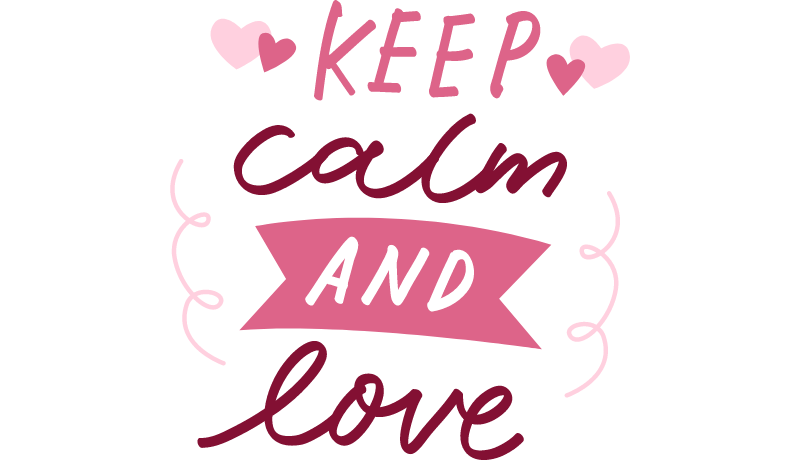This post contains affiliate links. This means I may earn a commission should you choose to sign up for a programme or make a purchase using my link. I affiliate only with products and services that I personally love using or that are credible:)
The most important thing in communication is hearing what isn’t said – Peter Drucker.
Communication has always been incredibly important to me. It’s not just a tool for exchanging words but a vital element that breathes life into every relationship.
In a healthy romantic relationship, non-verbal communication, in particular, speaks volumes, often conveying emotions and intentions more powerfully than words alone.
In this blog post, we will explore five essential nonverbal communication behaviours crucial for fostering a healthy and fulfilling romantic relationship. These behaviours go beyond words, shaping the dynamics of your connections and deepening the intimacy you share with your partner.
Let’s explore these fundamental aspects of nonverbal communication behaviours in a healthy romantic relationship and their significance in fostering thriving relationships.
Understanding nonverbal communication behaviours for a healthy romantic relationship
Nonverbal communication in a healthy romantic relationship is a rich and intricate aspect of human connection. It encompasses a wide range of cues, including gestures, facial expressions, body language, tone of voice, and our physical proximity to each other.
These nonverbal cues serve as a silent language that conveys our emotions, thoughts, and intentions without the need for words.
Imagine a scenario where your partner enters the room with a warm smile and open body language. Instantly, you can feel their joy and welcoming attitude, creating a positive and uplifting atmosphere.
On the contrary, crossed arms, a furrowed brow, or avoiding eye contact may indicate discomfort, disagreement, or emotional distress, signalling the need for understanding and support.
Understanding nonverbal communication in a healthy romantic relationship involves more than just interpreting individual gestures. It requires recognising patterns of behaviour, considering cultural influences, and understanding context-specific cues.
For instance, a gentle touch on the arm may convey reassurance and affection in one cultural context, while it may be perceived differently in another.
Nonverbal cues can uncover our genuine emotions, even if we attempt to hide them with words. They offer valuable insights into our emotional state, level of engagement, and overall connection with our partners.
By attentively observing and responding to these subtle signals, we can deepen our understanding, foster empathy, and strengthen the intimate bond we share with our loved ones.
In the following sections, we’ll explore specific nonverbal communication behaviours in a healthy romantic relationship that contribute to building a strong and harmonious bond.
These behaviours form the basis of effective communication, playing a vital role in building trust, intimacy, and mutual respect within a relationship.
7 must know non-verbal communication behaviours for a healthy romantic relationship
Nonverbal Behaviour #1: Body Language and Gestures
Body language and gestures play a significant role in conveying emotions, intentions, and attitudes in a romantic relationship. Simple gestures like a warm smile, a gentle touch, or a comforting hug can communicate love, support, and affection without the need for words.
Paying attention to positive body language, such as open posture, facing towards each other, and mirroring each other’s movements, fosters a sense of connection and understanding.
For example, when one partner is feeling upset, the other partner’s open and welcoming body language can help create a safe space for communication and comfort. Conversely, if one partner is closed off or defensive in their body language, it can lead to misunderstandings and conflict in the relationship.
Negative body language like crossed arms, avoiding eye contact, or tense posture can indicate discomfort, disagreement, or emotional distress.
Being aware of these nonverbal cues and responding appropriately helps partners communicate effectively and maintain a harmonious relationship.
Nonverbal Behaviour #2: Eye Contact and Facial Expressions
Eye contact and facial expressions are crucial in a romantic relationship as they demonstrate attention, interest, and emotional connection.
Maintaining good eye contact during conversations shows that you are actively engaged and listening to your partner. It builds trust and rapport, fostering a deeper sense of intimacy and understanding.
Facial expressions also play a crucial role in nonverbal communication. Smiles, frowns, raised eyebrows, and other facial gestures can communicate a wide range of emotions.
Positive facial expressions, such as genuine smiles and attentive expressions, signal warmth, affection, and empathy. On the other hand, negative facial expressions like scowls or blank stares can indicate displeasure, discomfort, or lack of interest.
Being mindful of your eye contact and facial expressions helps create a positive and receptive atmosphere in your relationship. It allows you to convey emotions, express empathy, and connect with your partner on a deeper emotional level.
Nonverbal Behaviour #3. Touch and Physical Affection
Touch and physical affection are powerful expressions of love, intimacy, and connection in a romantic relationship, fostering closeness and trust.
Simple acts like holding hands, hugging, cuddling, or gentle caresses can convey warmth, support, and closeness.
Physical affection releases oxytocin, often referred to as the “love hormone,” which promotes bonding and feelings of trust and security between partners. Regular physical touch fosters a sense of connection and strengthens the emotional bond in the relationship.
It’s important to be mindful of your partner’s comfort level with physical affection and to communicate openly about boundaries and preferences. Respecting each other’s boundaries when expressing affection nonverbally is essential for cultivating a healthy and fulfilling romantic connection.
Nonverbal Behaviour #4. Active Listening and Nonverbal Responses

Active listening involves more than just hearing words; it encompasses paying attention to nonverbal cues and responding empathetically. In a healthy romantic relationship, active listening through nonverbal responses shows that you are fully present and engaged in the conversation.
Nonverbal responses such as nodding, smiling, maintaining eye contact, and mirroring gestures demonstrate understanding, empathy, and support. These cues convey that you value your partner’s thoughts and feelings, creating a safe and open space for communication.
On the contrary, nonverbal behaviours like distraction, looking away, or appearing disinterested can hinder effective communication and create misunderstandings.
Practicing active listening with positive nonverbal responses strengthens the emotional connection and fosters trust and intimacy in the relationship.
Nonverbal Behaviour #5. Space and Proximity
Understanding personal space boundaries is essential in nonverbal communication within a romantic relationship, as it contributes to comfort, trust, and mutual respect.
Respectful navigation of physical space contributes to comfort, trust, and mutual respect between partners.
Being mindful of personal space boundaries shows consideration and sensitivity to your partner’s comfort level. Respectful gestures like giving space when needed, respecting privacy, and avoiding intrusive behaviours demonstrate a deep understanding of each other’s needs and preferences.
For example, if one partner expresses a need for alone time to recharge, the other partner can respect this boundary by giving them space without taking it personally. This shows a level of understanding and consideration that strengthens the bond between them.
Conversely, invading personal space without permission or disregarding boundaries can lead to discomfort and tension in the relationship.
Establishing and respecting healthy boundaries regarding physical proximity fosters a sense of safety and security, enhancing the overall well-being of the partnership.
Nonverbal Behaviour #6: Emotional Transparency and Nonverbal Cues
Emotional transparency involves being open and authentic about your feelings and emotions, both verbally and nonverbally. In a healthy romantic relationship, nonverbal cues play a significant role in conveying emotional transparency and fostering trust and connection.
Nonverbal cues such as genuine smiles, expressive facial expressions, relaxed body language, and tone of voice can communicate sincerity, vulnerability, and emotional availability. These cues allow partners to express their true feelings and experiences, creating a deeper sense of understanding and empathy.
On the contrary, hiding emotions, using defensive body language, or sending mixed signals can lead to misunderstandings and barriers in communication.
Embracing emotional transparency through nonverbal cues builds intimacy and strengthens the emotional bond between partners, enhancing the overall quality of the relationship.
Nonverbal Behaviour #7. Consistency and Congruence
Aligning verbal and nonverbal messages is crucial for building trust and understanding in a romantic relationship, enhancing clarity and mutual understanding.
Consistency refers to aligning your verbal and nonverbal messages, ensuring that they convey the same meaning and intention.
Congruence involves being genuine and authentic in your nonverbal expressions, reflecting your true feelings and attitudes. When your nonverbal cues are consistent and congruent with your verbal communication, it enhances clarity and fosters mutual understanding between partners.
Inconsistent or incongruent nonverbal cues, such as saying one thing while displaying conflicting body language or facial expressions, can create confusion and distrust.
Striving for consistency and congruence in nonverbal communication, such as aligning your words with your gestures, fosters transparency, honesty, and harmony in the relationship, thereby strengthening the emotional connection and mutual respect.
You might also be interested in –
- How to Stop Taking Things Personally in a Relationship?
- If You Have a Jealous Partner, Implement These 8 Solutions for Relationship Growth
- 7 Convincing Signs a Bipolar Man Loves You (Even Amidst the Challenges!)
Final Thoughts…

Effective nonverbal communication behaviours are fundamental pillars of building and maintaining a healthy romantic relationship. They serve as silent but powerful expressions of emotions, understanding, and connection between partners.
By being attuned to your partner’s nonverbal cues, you show that you are actively listening and are sensitive to their needs and feelings. This level of attentiveness can deepen the bond between you and your partner, leading to a stronger and more fulfilling relationship.
Remember, actions truly do speak louder than words, and paying attention to nonverbal cues can help you build a solid foundation of trust and understanding in your romantic partnership.
By being mindful of these behaviours and practicing them consistently, you can deepen your emotional bond, foster mutual trust, and strengthen the foundation of your relationship.
Embrace these nonverbal communication behaviours as instruments to convey love, support, and appreciation, enriching the emotional journey of your romance.
Key Takeaways
- Nonverbal Communication Amplifies Emotions: Nonverbal cues like body language, eye contact, and touch intensify the emotions and intentions expressed through words, deepening the bond in a romantic relationship.
- Active Listening Enhances Understanding: Engaging in active listening with empathetic nonverbal responses like nodding and eye contact enhances mutual understanding and fosters a supportive communication environment.
- Respectful Boundaries Nurture Trust: Respecting personal space boundaries and demonstrating consistent and congruent nonverbal behaviours create a safe and respectful space where partners feel valued, understood, and connected.
Real-Life Scenario: A Case Study on nonverbal communication behaviours for a healthy romantic relationships
Sarah and Michael have been in a committed relationship for several years. Recently, Sarah started a new job that has been causing her a lot of stress and anxiety. One evening, she comes home feeling overwhelmed and exhausted. As she sits down on the couch, Michael notices her tense posture and furrowed brow.
Michael, being attuned to Sarah’s nonverbal cues, immediately senses that something is wrong. Instead of bombarding her with questions, he sits next to her and gently places his hand on her shoulder, offering silent support. Sarah, feeling understood without having to explain herself, starts opening up about her challenges at work.
Throughout their conversation, Michael maintains a respectful distance, allowing Sarah to express herself without feeling overwhelmed. He nods in understanding, maintains eye contact, and mirrors her calm demeanour to convey empathy and support.
As Sarah talks, Michael listens actively, offering reassuring nods and verbal affirmations to show that he is fully present and engaged in the conversation. His nonverbal cues, such as comforting touches and attentive gestures, create a safe and supportive environment for Sarah to share her feelings openly.
In this scenario, Michael’s active listening and respectful nonverbal responses demonstrate the importance of understanding and responding to nonverbal cues in a healthy romantic relationship.
By being attuned to Sarah’s emotions and respecting her boundaries, Michael strengthens their emotional connection and provides the support Sarah needs during challenging times.
If you still can’t figure out a way… Find a happier and healthier you in relationships with a comprehensive online therapy experience. Seek support tailored to your relationship goals.
Enjoy a special 20% discount with code THERAPY20, and explore financial aid options during checkout for accessibility. SIGN UP NOW! Prioritise your well-being on the path to meaningful connections. 💖🌈
As we draw near the end of this blog, if you’re looking to transform your space for some motivation, consider checking out my Etsy shop for prints that inspire and uplift✨And my spiritual art expressions here🪷
Your support is appreciated!
Until next time,
Love, light, and endless inspiration to all.
Neethu.




